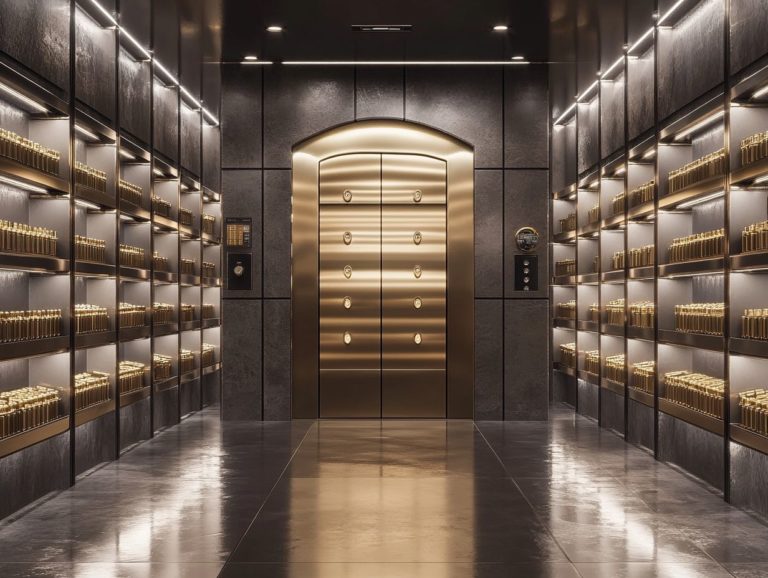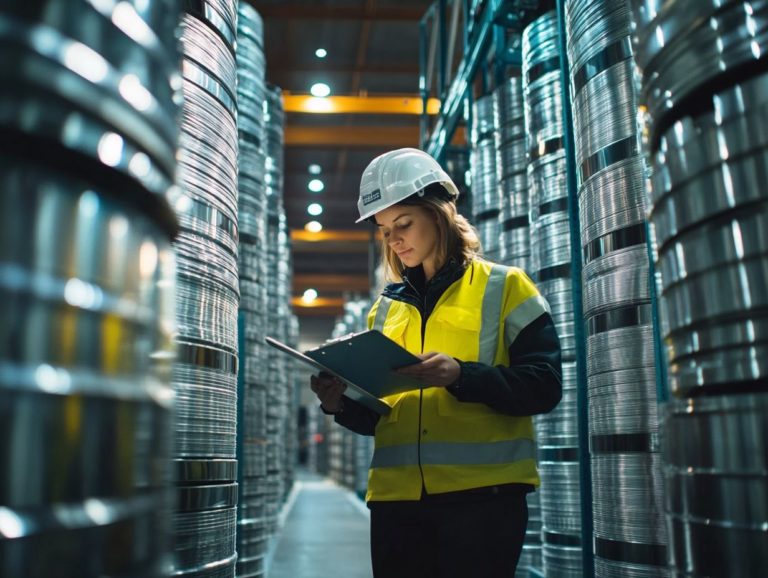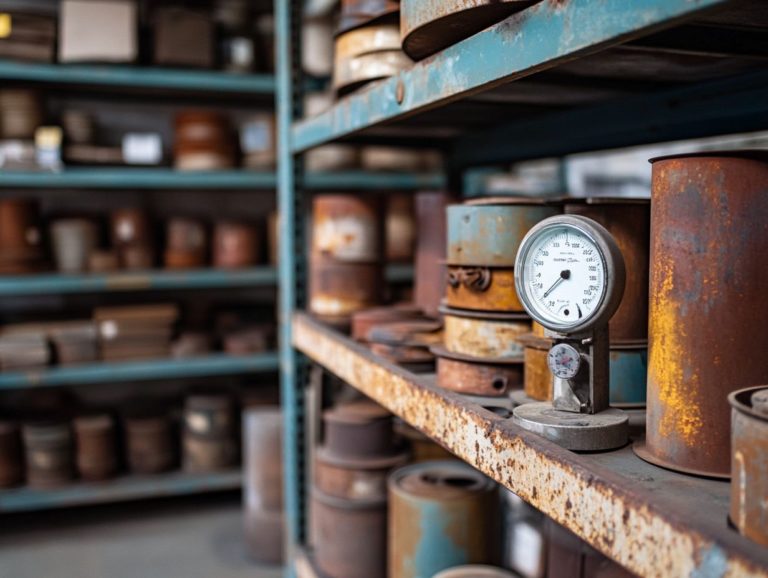How to Protect Your Metals from Moisture
Moisture can be a stealthy adversary when it comes to the longevity and integrity of metals.
From rust and corrosion to unexpected structural failures, understanding how humidity impacts these materials is essential for anyone involved in metalwork.
This article delves into effective strategies to safeguard your metals from moisture! You’ll discover best practices for storing metals, along with common pitfalls to steer clear of, all while underscoring the significance of regular maintenance.
By the end, you’ll possess the insights necessary to protect your metals and ensure their durability for years to come.
Contents
- Key Takeaways:
- Understanding the Effects of Moisture on Metals
- Methods for Protecting Metals from Moisture
- Tips for Proper Storage and Handling
- Common Mistakes to Avoid
- Maintenance and Inspection for Long-Term Protection
- FAQs
- What are some common ways to protect metals from moisture?
- Why is it important to protect metals from moisture?
- How do I know if my metal has been damaged by moisture?
- Can I use household items to protect my metals from moisture?
- What should I do if I accidentally expose my metal to moisture?
- When storing metals, what is the best way to protect them from moisture?
Key Takeaways:
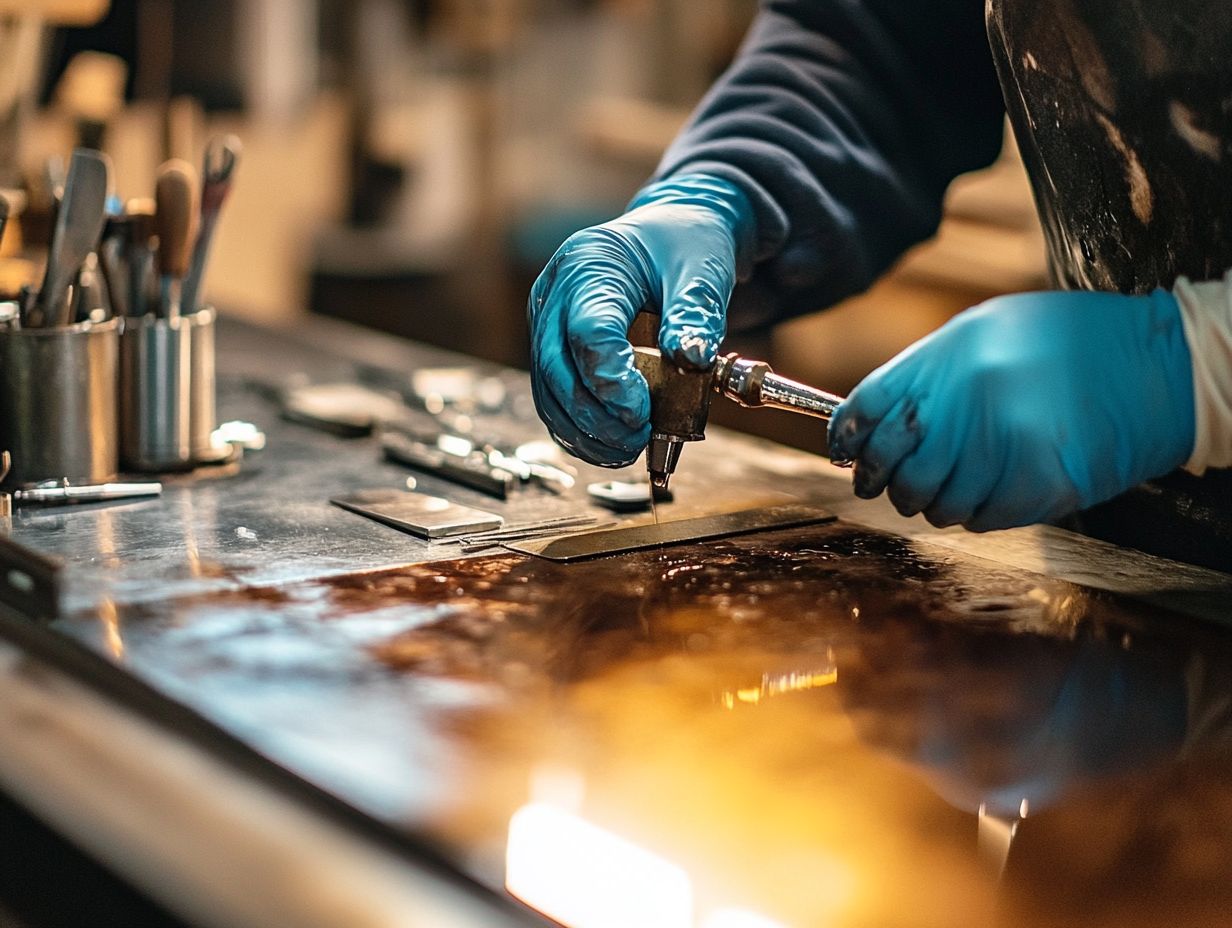
- Moisture can severely damage metals, leading to corrosion.
- Protect your metals using coatings, sealants, and dehumidifiers.
- Always store, handle, and maintain your metals properly to avoid moisture damage!
Understanding the Effects of Moisture on Metals
Moisture influences metals significantly, causing various types of corrosion, including rust. This can compromise the integrity of materials like galvanized steel and aluminum.
As moisture levels rise, chemical reactions occur, leading to the deterioration of metal properties. This poses a real risk of catastrophic failure in structures, machinery, and products across sectors like automotive, electronics, and agriculture.
Understanding the effects of moisture on metal is crucial for developing effective rust prevention and moisture control strategies. This ensures both durability and safety of materials.
Corrosion and Other Damaging Effects
Corrosion is more than just an unsightly blemish; it represents significant structural and operational threats caused by moisture and humidity.
These challenges can take various forms. Pitting corrosion causes localized damage, while galvanic corrosion happens when different metals interact in a corrosive environment. Even minor corrosion can jeopardize safety and inflate maintenance costs over time.
To effectively tackle these issues, prioritize moisture control. It minimizes conditions that invite rust and decay. Additionally, knowing how to protect your precious metals from theft can further safeguard your investments. Utilizing corrosion inhibitors can create protective layers on metal surfaces, enhancing durability and extending the lifespan of critical components across multiple industries.
Methods for Protecting Metals from Moisture
Protecting metals from moisture requires a comprehensive strategy that includes protective coatings, sophisticated corrosion inhibitors, and cutting-edge VCI technology. This technology helps protect metals from rust by releasing a vapor that forms a protective layer.
Coatings and Sealants
Protective coatings and sealants serve as your first line of defense against moisture-induced corrosion. They create a barrier that significantly enhances the corrosion resistance of metals like galvanized steel and stainless steel.
These coatings come in various forms, including epoxy, polyurethane, and zinc-rich primers, each tailored to meet specific environmental challenges. For instance, epoxy coatings are commonly used in industrial environments, proving effective against harsh chemicals. Polyurethane options excel in flexibility and UV resistance, making them ideal for outdoor scenarios.
The application methods range from straightforward brush-on techniques to sophisticated spray systems, depending on the material and the desired finish. In construction or the automotive industry, professionals depend on these protective solutions to ensure longevity and durability, effectively preventing costly rust damage and minimizing maintenance needs.
Dehumidification Techniques
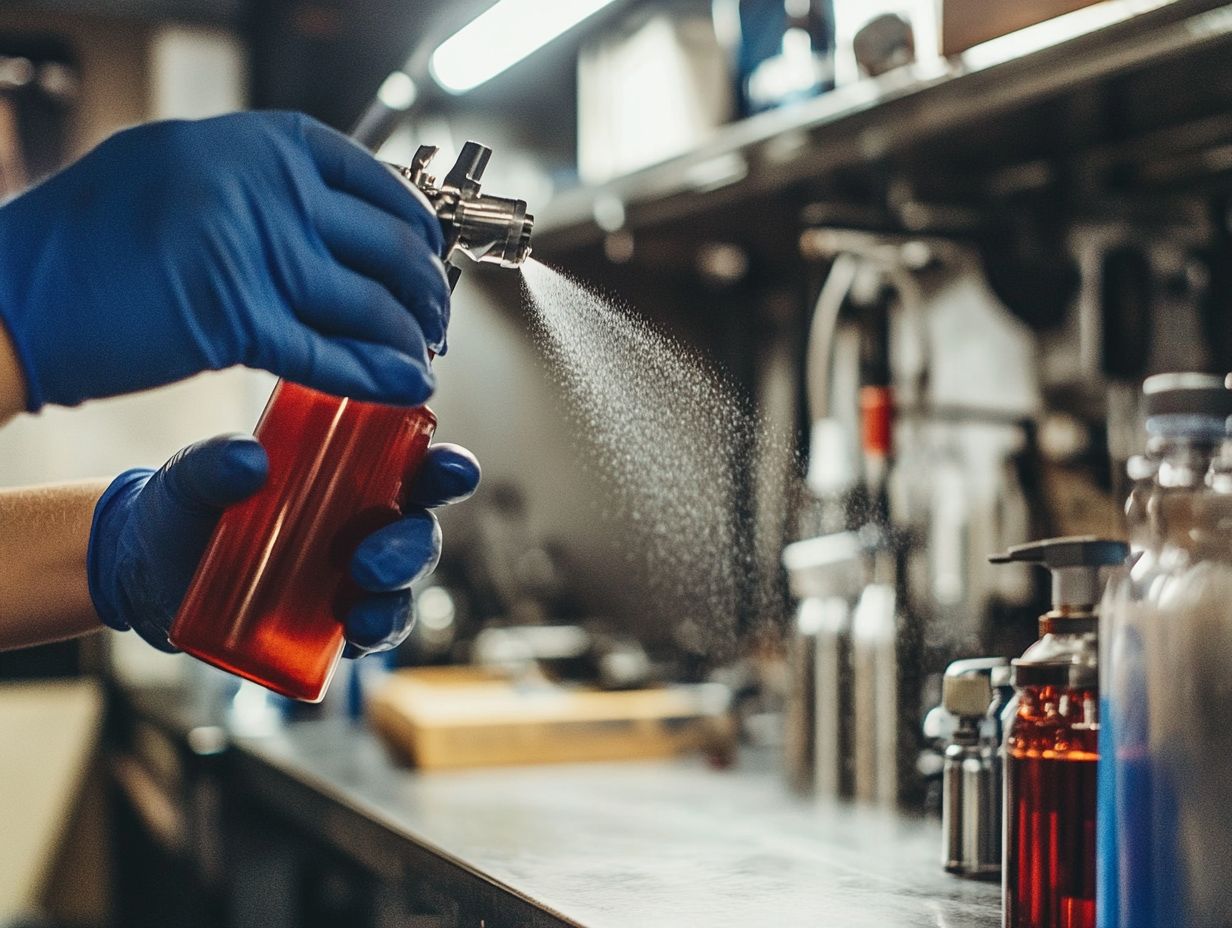
Dehumidification techniques play a pivotal role in maintaining optimal humidity levels in your storage and operational environments. They significantly mitigate the risk of metal corrosion.
By employing a range of methods such as using fans or vents to move air, desiccant dehumidifiers, and condensation techniques you can effectively manage moisture levels. These methods can be customized to suit the unique requirements of various materials, ensuring that wood, textiles, and sensitive electronic equipment are all protected from the harmful effects of elevated humidity.
Integrating these dehumidification systems with regular maintenance inspections allows for a comprehensive approach to moisture management. This proactive strategy enables facility managers to detect potential issues before they escalate, safeguarding the long-term integrity of your stored assets.
Tips for Proper Storage and Handling
Effective storage and handling practices are essential to minimize moisture exposure to metals. It s important to ensure that your packaging materials and shipping conditions align with the best practices for moisture control, providing robust protection against corrosion.
Best Practices for Storing Metals
When it comes to storing metals, following best practices is essential to prevent moisture-related damage and ensure effective rust prevention.
Using the right packaging materials is a key part of this strategy. Opt for plastic wraps or specialized corrosion-inhibiting films for an extra layer of protection against environmental factors.
Maintaining optimal environmental controls, like consistent temperature and ventilation, also plays a significant role in minimizing the risks linked to metal degradation.
Don t underestimate the importance of monitoring humidity levels. Keeping an eye on this can help you spot potential issues before they escalate, ultimately preserving the integrity of the metals in your care.
Handling and Transport Considerations
Handling and transport considerations are vital for preserving the integrity of metals during shipping. Effective moisture control strategies are essential to prevent corrosion.
To tackle these challenges, implement a blend of advanced packaging solutions and cutting-edge technologies. For instance, using Vapor Corrosion Inhibitors (VCIs), which are materials that prevent corrosion by releasing protective vapors, in your packaging materials can create a protective barrier that significantly reduces moisture exposure.
By adhering to strict protocols for optimal shipping conditions like maintaining temperature and humidity control you can ensure that your products remain in peak condition.
The thoughtful selection of materials and techniques throughout the transport process not only safeguards the metals but also enhances the reliability of your shipping operation. Therefore, adopting a holistic approach to minimize moisture risk is absolutely essential!
Common Mistakes to Avoid
Understanding the common mistakes that contribute to moisture damage is crucial for effectively protecting metals from corrosion. By consistently implementing proper maintenance inspections and preventive measures, you can safeguard your assets with confidence.
Factors that Can Lead to Moisture Damage
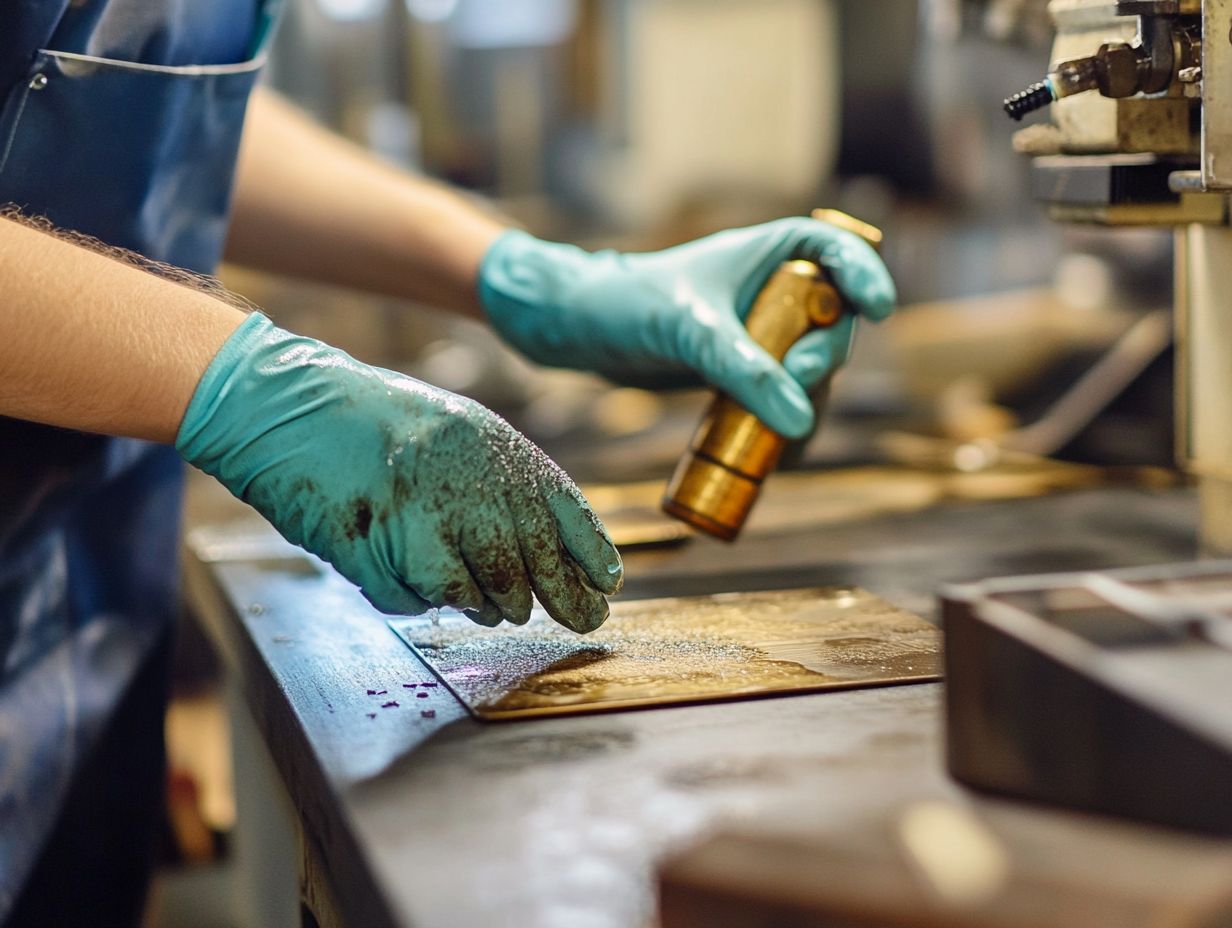
Several environmental factors contribute to moisture damage that you should be aware of. High humidity levels act as a catalyst for chemical reactions that can accelerate metal corrosion.
Temperature fluctuations and the presence of pollutants can further exacerbate this deterioration. When metals experience cycles of heat and cold, the resulting expansion and contraction can lead to micro-cracks, allowing moisture to infiltrate more easily.
Corrosive agents like salt and atmospheric chemicals can dramatically shorten the lifespan of metals. Understanding these interactions is essential to developing effective corrosion prevention strategies.
Such strategies directly impact the performance of protective coatings or treatments in real-world conditions, ultimately influencing the long-term durability of your structures and components.
Maintenance and Inspection for Long-Term Protection
Regular maintenance and inspection are essential practices for ensuring the long-term protection of metals against moisture and corrosion. By adopting these measures, you enable timely interventions that significantly enhance your rust prevention efforts.
Regular Maintenance and Inspection Procedures
Implementing regular maintenance and inspection procedures is crucial for identifying potential corrosion risks and ensuring effective moisture control in metal structures.
Such practices facilitate the early detection of wear and tear and significantly extend the lifespan of critical components. By routinely checking for signs of rust or deterioration, maintenance teams can apply protective coatings and sealants that enhance the corrosion resistance of metals.
Assessing drainage systems and ensuring proper ventilation are key strategies to prevent moisture accumulation, a primary catalyst for corrosion. This proactive approach protects the structural integrity of the metals involved while minimizing long-term repair costs and enhancing safety. Ultimately, this leads to more reliable performance in various environments.
FAQs
What are some common ways to protect metals from moisture?
Common ways to protect metals from moisture include using a sealant or coating, storing them in a dry environment, using desiccants or drying agents, and regularly cleaning and drying the metal surfaces.
Why is it important to protect metals from moisture?
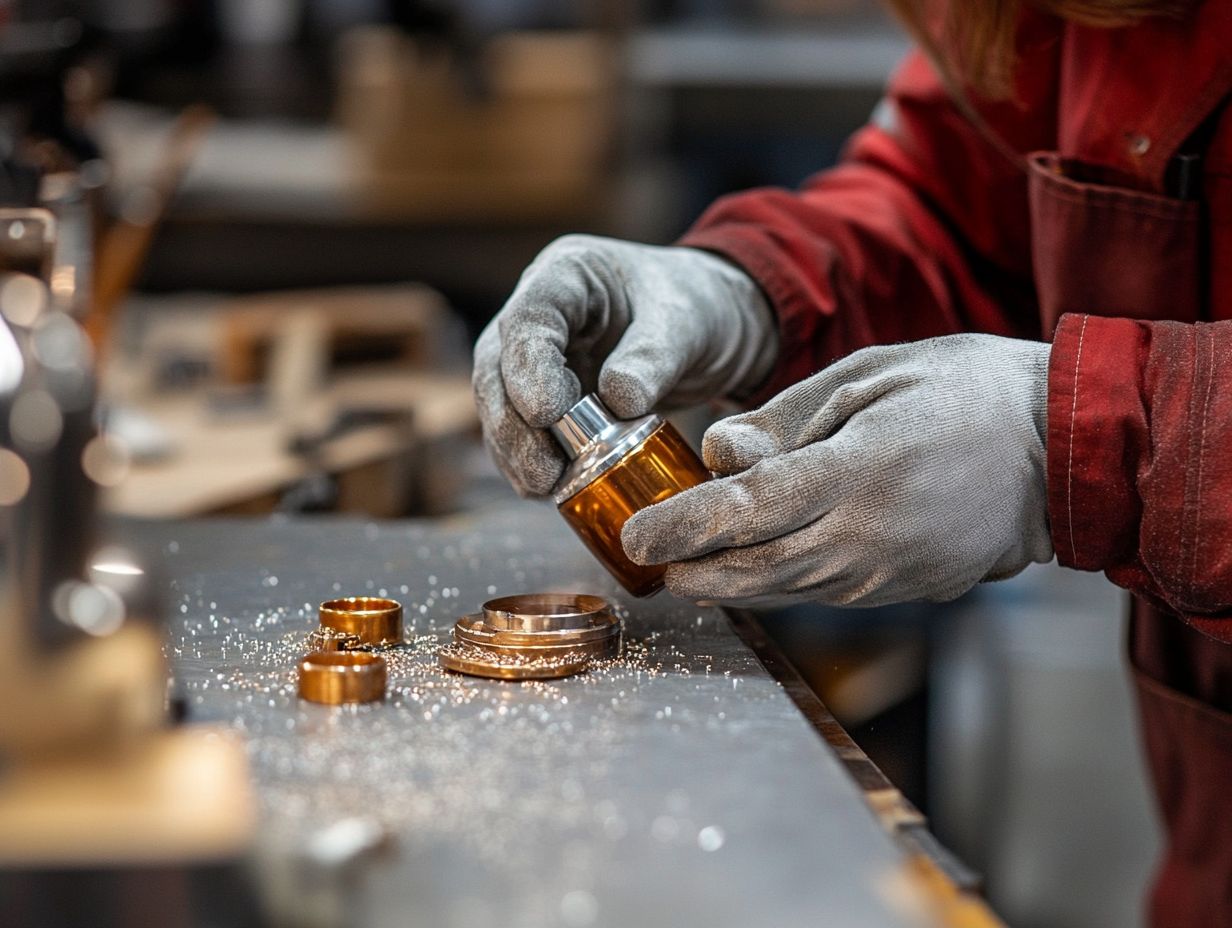
Moisture can cause metal to corrode, leading to structural damage and reducing its lifespan. Protecting metals from moisture helps maintain their integrity and appearance.
How do I know if my metal has been damaged by moisture?
Signs of moisture damage on metal include rust, discoloration, and pitting on the surface. You may also notice a musty or moldy smell, indicating the presence of moisture.
Can I use household items to protect my metals from moisture?
Yes, several household items can help protect metals from moisture. These include baking soda, a common kitchen ingredient, silica gel packets, and even plain white vinegar. They can absorb excess moisture and prevent damage to your metals.
What should I do if I accidentally expose my metal to moisture?
Act quickly! Dry off your metal immediately to prevent damage. Use a clean cloth to wipe away any moisture and allow the metal to air dry completely. You may also want to apply a rust preventative product to protect against future damage.
When storing metals, what is the best way to protect them from moisture?
The best way to protect metals from moisture during storage is to keep them in airtight containers or bags. You can also add desiccant packs or silica gel packets to absorb any excess moisture. Ensure to store metals in a cool, dry place away from potential sources of moisture, such as pipes, windows, or humid areas.
Quick Tips for Storing Metals:
- Use airtight containers or bags.
- Add desiccant packs or silica gel packets.
- Store in a cool, dry place.
Start protecting your metals today and ensure their longevity!











